The Concept of Automated Fish Grading Systems
Automated fish grading systems are advanced machinery created to classify and arrange fish according to specific criteria like size, weight, species, and quality. These systems represent a sophisticated fusion of technology and industrial processes, serving the needs of fisheries, aquaculture, and food processing sectors. By harnessing automation, they streamline the labor-intensive and often subjective task of manually grading fish, ensuring efficiency, consistency, and impartiality in the process.
The operation of automated fish grading systems relies on algorithms that evaluate the fish as they move through the machinery. These algorithms are typically supplied by a conveyor system that transports the fish from one end of the machine to the other. While in transit, sensors scan the fish to identify their attributes. Subsequently, these sensors transmit data to the computer system, which then processes the information to determine each fish's grade and category. This decision-making process frequently occurs in real-time, enabling prompt sorting and distribution of fish into various grades.
Businesses necessitating consistent quality and classification of fish products find automated fish grading systems indispensable. These systems not only save time and labor expenses but also reduce the risk of human error inherent in manual grading procedures. Moreover, they offer a level of precision challenging to achieve through traditional means, a critical factor in upholding customer confidence and compliance with industry regulations in the seafood sector.
Varieties of Automated Fish Grading Systems
Automated fish grading systems are available in diverse configurations, each tailored to meet specific operational needs:
-
Weight-Based Grading System: This system gauges fish weight to determine their size category, commonly used for bulk grading tasks to handle substantial volumes rapidly, prevalent in commercial fisheries sorting fish for sale based on weight.
-
Size-Based Grading System: These systems employ cameras and software to assess key body measurements like length and width, assigning a size grade, particularly beneficial for operations supplying fish to restaurants or seafood markets.
-
Combination Grading System: Some automated fish grading systems blend weight and size measurements to evaluate overall quality, adaptable to various fish species and grading standards, suitable for diverse industry applications.
-
Vision Grading System: Utilizing technologies such as computer vision, these systems analyze fish features like skin condition, fin coloration, and presence of external parasites, ideal for detailed analysis in scientific research or specialized grading tasks.
-
Multi-Parameter Grading System: This comprehensive approach considers multiple parameters including weight, size, appearance, or freshness, providing a more detailed assessment compared to systems focusing solely on weight or size.
Guidelines for Selecting Automated Fish Grading Systems
Choosing an automated fish grading system necessitates a thoughtful evaluation of several factors to ensure it aligns with your business's specific requirements. The selected system should correspond with the fish species and sizes being processed, as well as the desired precision and industry standards.
Initially, consider the variety of fish to be graded. Different species may demand distinct grading methods; for example, flatfish may benefit from a weight-based system, while round fish may be better suited for size-based grading systems. Additionally, the chosen system should handle various textures and delicacies without causing damage.
Secondly, assess the operational environment of the system. In industries with stringent hygiene standards like food processing or pharmaceuticals, seek systems that are easy to clean and made of durable materials such as stainless steel.
Furthermore, contemplate the level of automation required. Fully automated systems equipped with advanced sensors and artificial intelligence can offer high-throughput grading with minimal human intervention, advantageous for large-scale operations albeit at a higher cost. Semi-automated systems may strike a balance between efficiency and cost-effectiveness while still providing a notable degree of automation.
Lastly, consider the after-sales support and maintenance services provided by suppliers. Ensure adequate technical support and maintenance options are available to prevent significant downtime and keep your system operational.
Insights on Automated Fish Grading Systems on Alibaba.com
Alibaba.com serves as an expansive marketplace connecting global businesses with numerous suppliers offering automated fish grading systems tailored to industry-specific needs. With a wide array of options from suppliers worldwide, Alibaba.com ensures that businesses can discover suitable fish grading equipment irrespective of their size or specific demands.
The platform's commitment to facilitating seamless trade is evident through its user-friendly interface supporting local languages and mobile accessibility. This ensures easy navigation of product offerings and effective communication with sellers, even when on-the-go or interacting with international suppliers. Additionally, Alibaba.com's Trade Assurance service provides payment protection for buyers until completion of delivery, assuring the security of their investment.
Choosing Alibaba.com grants access to a vast selection of automated fish grading systems enhancing operational efficiency while upholding high quality standards in seafood offerings. Whether managing a small local fish shop or a large-scale production facility, Alibaba.com's supplier network ensures finding equipment that meets business requirements without compromising on service or functionality.
Frequently Asked Questions about Automated Fish Grading Systems
What is the purpose of an automated fish grading system?
An automated fish grading system is utilized to streamline the grading process of fish using techniques like computer vision, weight measurement, and software algorithms to determine fish quality and grade based on predetermined standards.
How does an automated fish grading system operate?
An automated fish grading system functions by passing fish through sensors that measure various quality indicators such as size, shape, and color. Based on these measurements, the system determines the appropriate grade and sorts the fish accordingly.
What are the primary benefits of employing an automated fish grading system?
Automated fish grading systems offer heightened efficiency, grading consistency, reduced labor expenses, and precise sorting, significantly enhancing the productivity and profitability of fish processing operations.
Can automated fish grading systems accommodate all fish types?
Yes, automated fish grading systems are designed to handle a broad range of fish species using diverse assessment methods to accurately grade various types of fish.
Are there different sizes available for automated fish grading systems?
Automated fish grading systems come in various sizes to suit different processing volumes and spatial requirements of processing plants. It is crucial to select a system size aligning with the expected capacity of your operation.
How do I choose the appropriate material for a fish grading system?
The selection of material depends on your processing needs. Stainless steel is commonly chosen for its durability and ease of cleaning, while food-grade plastics may be suitable for less demanding applications.
What kinds of after-sales services are typically provided with automated fish grading systems?
After-sales services for automated fish grading systems may include online support, video technical assistance, field maintenance and repair services, and overseas engineering support. Availability of services may vary among suppliers.
How does the multi-head combination feature benefit a fish grading system?
The multi-head combination feature enables a single system to conduct grading operations on multiple samples simultaneously, ideal for high-volume processing tasks in large seafood processing plants.
Are color-sorting features present in automated fish grading systems?
While some advanced systems may incorporate color-sorting capabilities, grayscale processing methods are more common for their accuracy and consistency in evaluating fish quality without being influenced by color.
What factors should be considered when selecting voltage requirements for my automated fish grading system?
Ensure that the voltage requirements of your automated fish grading system match the available power supply in your processing facility. Systems may operate on various voltages such as 380v or 220v.
Can I find a customized automated fish grading system on Alibaba.com?
Alibaba.com connects buyers with suppliers offering customized solutions, including tailor-made equipment and software to suit specific processing requirements.



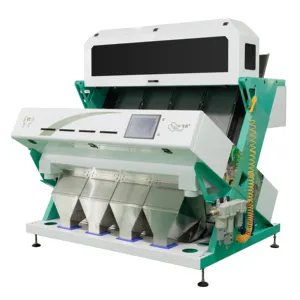







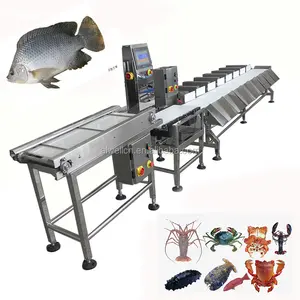
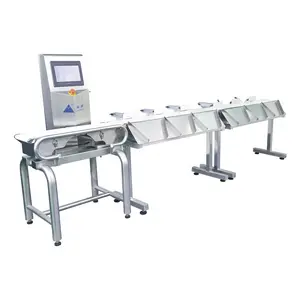

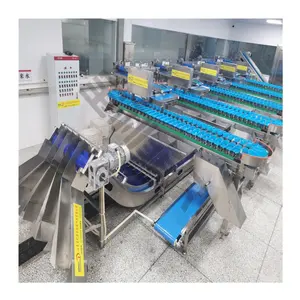

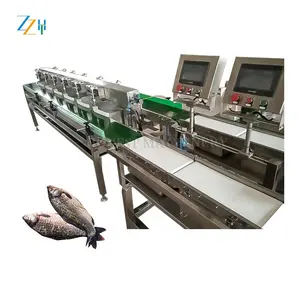
































 浙公网安备 33010002000092号
浙公网安备 33010002000092号 浙B2-20120091-4
浙B2-20120091-4